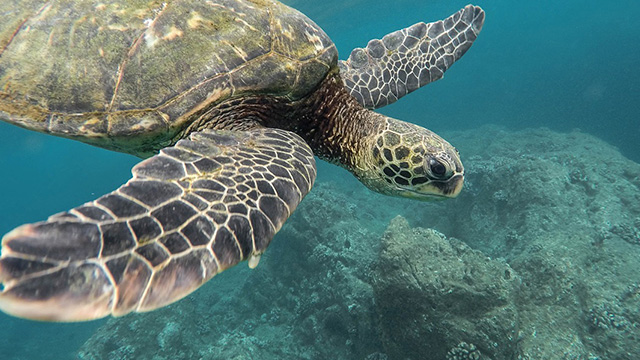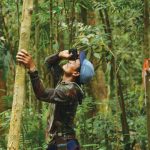Jakarta (Greeners) – As already vulnerable naturally, sea turtles population is facing threats due to human activities, based on survey conducted by Pacific Ocean Resources Research Center, University of Papua, supported by Conservation International Indonesia, in Kaimana district.
Ricardo Tapilatu, Ocean Biology and Conservation of University of Papua, said there was a decrease of leatherback turtle population from 15,000 nests per year in 2008 to 2,000 nests per year in 2011. Last year, only 1,500 nests recorded.
The decrease is caused by several factors with the biggest threat is human behavior followed by predators, including pigs, lizards, eagles, sharks and environment such as as high temperature of the sand and high tide.
READ ALSO: TNC: Five Threats On Turtles in Indonesia
Fishing also poses threats on turtles such as swallow fish baits and stuck in the net. Other facts proved that plastic waste also caused deaths.
From our research, we found heavy metal on green sea turtle and hawksbill turtle’s eggs have reached above safe level for human consumption,” he said. “There are at least eight dangerous substance in those eggs, including mercury, cadmium, Arsenic, tin, zinc, manganese, iron and copper.”
READ ALSO: Ministry of Environment and Forestry Studies 350 New Species of Pejantan Island
For Kaimana, he added, surveys were conducted using interview method to local people and fishermen in Etna Bay, Lakahia and Ombanariki.
The survey was conducted on March to October 2016 which also declared six out of seven turtles in the world are in Indonesia with four of them found in West Papua, — green sea turtle, hawksbill turtle, olive ridley sea turtle, and leatherback turtle — which swim across Aru, Kei, Kaimana and Fakfak.
Victor Nikijuluw, Marine Program Director Conservation International Indonesia added that sea turtles hold crucial role in marine conservation, for instance green sea turtle eats seagrass resulted to increased fertility. Meanwhile, hawksbill turtles consume sponges and protect its fertility.
“Turtles come to release their eggs in sandy beaches is an indicator for good or poor health of the environment. Only non polluted beaches and water areas with good ecosystem are visited by turtles,” said Nikijuluw.
Reports by Danny Kosasih



















































